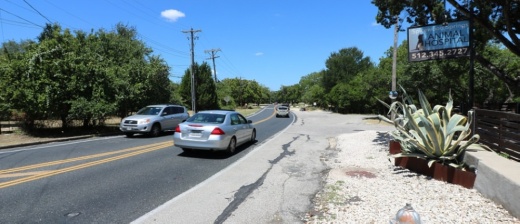Moving forward, city officials said they need public input to help decide what that art will be and how it will interact with the surrounding environment.
“We want to hear from you ... things that might inspire an artist, things that might give us direction or an understanding and make sure that we’re making an accurate, measured approach,” said Curt Gettman, senior project manager for the city of Austin’s Art in Public Places Program.
City staff held a meeting with the public July 14 to gather early input on potential public art on Spicewood Springs.
According to the presentation given that night, there are several opportunities for art installations along the roadway and inside some medians.
The public art is included in a $17 million mobility improvements project on Spicewood Springs. Improvements are planned along the roadway from Loop 360 to Mesa Drive, city documents show. Funding for the project comes from the 2016 Mobility Bond’s Regional Mobility Program, and construction is expected to begin early next year.
Of that $17 million, the city has budgeted $182,000 for the inclusion of public art. A city of Austin ordinance mandates 2% of eligible capital improvement project budgets are set aside to commission or purchase public art for the site of the improvements, according to the AIPP website.
Other examples of public art across Northwest Austin include the “Learning to Fly” sculptures by Lori Norwood outside of the Milwood Branch Library and the “Sanctuary of the Tribal Alligator” sculpture by T. Paul Hernandez at Hill Elementary School. The latter, installed in 1988, is the first sculpture by an Austin artist to become part of Austin’s permanent public art collection, according to the AIPP.
Gettman said the city will put out an open call to artists to apply for the installation, adding the city has a prequalified roster of artists who do work on mobility projects around Austin.
“There will be an opportunity for community members to participate in that process. ... The whole artist selection process takes six to eight months,” Gettman said.
At the July 14 virtual meeting, a few nearby homeowners provided input on potential design elements for any upcoming art. Most of the suggestions focused on how the public art should interact with the natural landscape and wildlife of the area surrounding the roadway.
“One thing you notice eventually is that everywhere you go, there’s wildlife everywhere. ... It would [need to] be certainly something that is animal friendly,” nearby resident Rusty Martin said.
David Hernandez, a project manager for Austin Public Works, further said his department may hold a public meeting to show the design work for the improvements along Spicewood Springs and gather input.
“I think it would be beneficial. ... Typically when we do have a public meeting to show the design, we do have the opportunity for property owners and residents who are there to see how the project is impacting their property,” Hernandez said.
For more information on the Spicewood Springs mobility improvements project, visit the Regional Mobility Program website.





